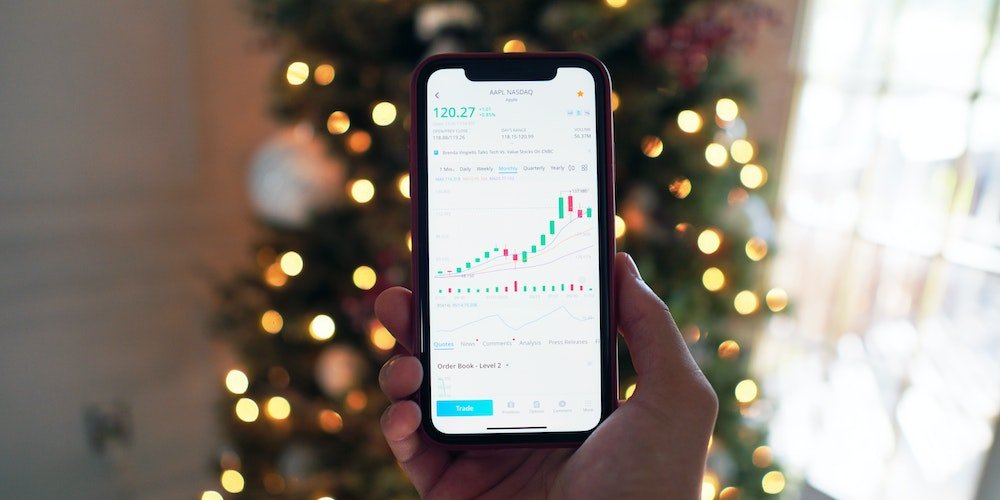In this blog post, we will explore dividend investing and how it can help you to build wealth.
Introduction
In the realm of finance and investment, one strategy has gained significant traction for its potential to provide consistent income and long-term growth – dividend investing. This approach allows investors to reap the benefits of both capital appreciation and regular dividend payouts from their investments.
If you’re curious about how to make your money work for you, this guide to dividend investing will provide you with a solid foundation to get started. Let’s delve into the world of dividend investing and explore its nuances.
Table of Contents
What is Dividend Investing?

Dividend investing is a strategic approach in which investors focus on purchasing stocks from companies that distribute a portion of their earnings to shareholders in the form of dividends.
Dividends are typically paid out regularly, often quarterly, and represent a share of the company’s profits.
Investors who engage in dividend investing seek not only the potential for capital appreciation as the stock value rises but also a steady stream of passive income.
The Advantages of Dividend Investing
Dividend investing offers several compelling advantages for investors looking to build wealth over the long term:
1. Steady Income Generation:
Investors can enjoy a consistent income stream from dividends, providing financial stability and reducing reliance on other income sources.
2. Diversification:
Dividend stocks are available across various sectors, allowing investors to diversify their portfolios and mitigate risk.
3. Long-Term Growth Potential:
Companies that pay dividends tend to be well-established and financially stable, offering the potential for long-term capital growth.
4. Compounding Effect:
Reinvesting dividends can lead to the compounding effect, where the reinvested dividends generate additional income and potentially accelerate wealth accumulation.
5. Resilience in Volatile Markets:
Dividend-paying stocks often exhibit more stability during market downturns, providing a cushion against market volatility.
Getting Started with Dividend Investing
To embark on your dividend investing journey, follow these steps:
Research and Selecting Dividend Stocks
Begin by researching companies with a history of consistent dividend payouts.
Look for companies with strong financials, a competitive edge in their industry, and a sustainable dividend yield.
Understanding Dividend Metrics
Familiarize yourself with key dividend metrics, such as dividend yield (dividend as a percentage of stock price), payout ratio (dividend as a percentage of earnings), and dividend growth rate.
These metrics help assess the sustainability and growth potential of dividends.
Diversification Strategy
Build a diversified portfolio by selecting dividend stocks from different sectors.
This strategy reduces risk and ensures that your income is not solely reliant on a single industry’s performance.
Reinvestment or Payout
Decide whether you want to reinvest dividends to take advantage of compounding or receive them as regular income.
Your strategy will depend on your financial goals.
Exploring Different Dividend Strategies
Dividend Growth Investing
Dividend growth investing involves selecting companies that consistently increase their dividend payouts over time. These companies demonstrate strong financial performance and a commitment to sharing profits with shareholders.
As dividends grow, investors benefit from higher income and the potential for increased capital appreciation.
High Dividend Yield Investing
Investors seeking immediate income often focus on high dividend-yield stocks. These stocks offer a higher percentage of dividends relative to their stock price.
However, it’s important to carefully assess the sustainability of such yields, as excessively high yields could indicate underlying issues.
Dividend Aristocrats
Dividend aristocrats are companies with a track record of consistently increasing dividends for a minimum of 25 consecutive years.
These companies are often considered stable and reliable, making them attractive choices for long-term investors.
Risks and Considerations in Dividend Investing
Market Risk
Like all investments, dividend stocks are subject to market fluctuations. The value of your investments may rise or fall based on broader market trends.
Interest Rate Risk
Rising interest rates can impact dividend stock prices, as investors may shift their focus to fixed-income securities offering higher yields.
Dividend Cuts
Companies facing financial challenges may cut or suspend dividend payments. Conduct thorough research to assess the financial health of potential investments.
Key Metrics for Evaluating Dividend Stocks
Dividend Yield
The dividend yield is the annual dividend payment divided by the stock’s current price. A higher yield may indicate an attractive investment, but it’s essential to consider other factors.
Payout Ratio
The payout ratio indicates the percentage of earnings a company uses to pay dividends. A lower ratio suggests the company has room to sustain or increase dividends.
Dividend History
Analyzing a company’s history of dividend payments provides insights into its consistency and commitment to shareholders.
Building a Dividend Portfolio
Sector Allocation
Diversify your dividend portfolio by investing across various sectors such as technology, healthcare, finance, and consumer goods.
Dividend Reinvestment Plans (DRIPs)
Consider enrolling in DRIPs, which automatically reinvest your dividends to purchase additional shares, boosting your holdings over time.
Regular Portfolio Review
Regularly review your portfolio’s performance and adapt your strategy as needed to align with your financial goals.
Common Myths about Dividend Investing
Dispelling misconceptions is crucial for making informed investment decisions. Let’s address some common myths about dividend investing:
Myth: Dividend Stocks Are Only for Older Investors
Reality: Dividend investing is suitable for investors of all ages. Younger investors can benefit from compounding, while older investors can rely on dividend income for retirement.
Myth: High Dividend Yield Is Always Better
Reality: A high dividend yield can indicate an unsustainable payout. It’s important to consider other factors like the company’s financial health and growth potential.
Myth: Dividend Cuts Are a Red Flag
Reality: While dividend cuts can be concerning, they don’t necessarily indicate a failing company. It’s crucial to analyze the reasons behind the cut and the company’s overall outlook.
Final Thought
In a world of financial opportunities, dividend investing shines as a strategy that offers both stability and growth. By focusing on companies with strong financials, sustainable dividend policies, and a commitment to shareholder value, you can create a portfolio that generates income while positioning you for long-term success.
However, remember that all investments carry inherent risks, and thorough research is vital before committing your hard-earned money. With the knowledge gained from this guide, you’re better equipped to navigate the dynamic landscape of dividend investing and make informed decisions that can shape your financial future.
Now that you have a comprehensive understanding of dividend investing, you’re ready to embark on your journey toward financial empowerment.
Frequently Asked Questions
Q: How can I find reliable information about dividend-paying companies?
A: Research financial news, company reports, and reputable investment websites to gather information about dividend-paying companies.
Q: Can dividends be paid in forms other than cash?
A: Yes, some companies offer dividends in the form of additional shares, known as stock dividends. This allows investors to increase their holdings without using cash.
Q: Are dividends guaranteed?
A: Dividends are not guaranteed and can be affected by changes in the company’s financial performance. It’s important to assess the company’s stability before investing.
Q: What is the ideal dividend yield?
A: The ideal dividend yield varies based on your investment goals and risk tolerance. Striking a balance between yield and sustainability is crucial.
Q: Do all companies pay dividends?
A: No, not all companies pay dividends. Growth-focused companies may reinvest their earnings back into the business instead.
Q: How do taxes work with dividends?
A: Dividend taxes vary by country and individual circumstances. In some places, dividends may be taxed at a lower rate than regular income.



